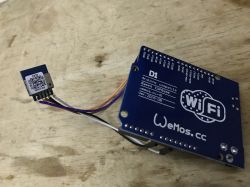solder2112 wrote:Hello. I recently purchased exactly the same light switch and while everything works properly, when switching on, the capacitor ( adapter ) starts to buzz quite a lot, after a while the buzzing slightly quiets but is still audible, the capacitor is plugged in at the chandelier, nowhere I know of anyone having a similar problem.
Hello, I also have an identical problem - capacitor connected at the lamp. I would appreciate any hints






